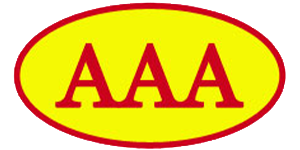
Analysis of the ASTM 430 Stainless Steel Coil Market
2025-10-30 11:01Analysis of the ASTM 430 Stainless Steel Coil Market
(Conducted based on public data from 2024 to 2025)
Product features and core applications Definition
ASTM 430 stainless steel coil is a ferritic stainless steel (containing 16-18% chromium), supplied in cold-rolled/ hot-rolled sheet form. It has corrosion resistance, oxidation resistance and cost advantages, but its welding performance is inferior to austenitic steel grades (such as 304).
Key Facts and Trends
Performance Classification: Moderate corrosion resistance (suitable for non-severe corrosive environments), excellent high-temperature oxidation resistance (can be used in heat treatment equipment and heat exchangers), relatively high hardness (HV approximately 200-250), supports processing such as cutting and stamping.
Core Application Areas:
Appliance Manufacturing: Refrigerator and washing machine shells, microwave oven cavities (accounting for approximately 30%);
Building Decoration: Elevator panels, curtain walls, interior decoration (accounting for approximately 25%);
Automotive Industry: Exhaust systems, components (accounting for approximately 15%);
Industrial Equipment: Chemical pipelines, heat exchangers (accounting for approximately 10%).
Technical Upgrades: Diversified surface treatment processes (2B, BA, NO.4, HL, etc.), "baby coil" (small coil, such as 585mm wide) improves downstream cutting efficiency.
Controversial Points
Competition with 304 Stainless Steel: It is replaced by 304 in scenarios with high corrosion resistance requirements (such as food contact), but still has no substitute in cost-sensitive areas (such as ordinary decorative parts).
2. Market Supply and Demand and Price Dynamics Definition
It covers the production, trade, inventory and price fluctuations of global ASTM 430 stainless steel coils. The key driving factors include raw material costs, policy environment and downstream demand.
Key Facts and Trends
Supply Pattern:
Main Production Areas: China (with Tianjin, Guangdong Jieyang as core production areas), accounting for approximately 60% of global production capacity;
Typical Specifications: Cold-rolled coil thickness ranging from 0.18 to 3mm, width ranging from 1000 to 1280mm; Hot-rolled coil thickness ranging from 0.2 to 20mm, with support for customized processing (cutting, bending, etc.).
Price Trends:
2024-2025 fluctuations: The price of hot-rolled coil in Linyi, China, rose from 1800 yuan/ton in December 2024 to 3340 yuan/ton in April 2025, an increase of 85.6%; the steel strip market in the North China region saw a weekly increase of 80 yuan/ton during the same period, with simultaneous increases in the East China and South China regions.
Drivers: Rising raw material (chromium iron) prices, regular maintenance due to environmental protection restrictions, and the recovery of downstream demand in appliances and construction.
Trade Characteristics: Online platforms (Alibaba, Baidu Aipurchasing) are the main promotion channels, supporting trade terms such as FOB, CIF, and DDP, with delivery periods ranging from 8-14 days (for regular orders) to 22-30 days (for customized orders).
Points of Controversy
Environmental Policy Impact: Under China's "carbon neutrality" policy, steel mills' production restrictions have led to short-term supply shortages and intensified price fluctuations, but may drive industry consolidation and enhance the concentration of leading enterprises in the long term.
3. Competitive Landscape and Industry Chain Analysis Definition
It involves the upstream and downstream relationships, major participants, and competitive strategies of the ASTM 430 stainless steel coil industry chain.
Key Facts and Trends
Industry Chain Structure:
Upstream: Chromium ore, nickel iron (affecting costs);
Middlestream: Steel mills (TISCO, enterprises in Ningbo Beilun District, etc.);
Downstream: Appliance manufacturers (Midea, Haier), architectural decoration companies, automotive component manufacturers.
Main Enterprises:
Top Chinese suppliers: TISCO (products in accordance with ASTM A240 standard), enterprises in Ningbo Beilun District (direct sales of cold-rolled coil);
International brands: Posco of South Korea (producing BA surface cold-rolled coils in cooperation with Chinese factories).
Competitive Strategies:
Cost Control: Reduce unit costs through large-scale production;
Differentiated Services: Provide customized surface treatment and processing services (such as welding, stamping).
Controversial Points
Survival Pressure for Small and Medium-sized Enterprises: Rising environmental costs and fluctuations in raw material prices have led to the withdrawal of small processing plants from the market, resulting in increased industry concentration.
4. Policy and Environmental Impact Definition
Analyze the constraining and guiding effects of environmental protection policies, trade barriers and industry standards on the market.
Key Facts and Trends
Environmental Protection Policies: Regular environmental restrictions on production in China have increased the maintenance rate of steel mills to 30% (data for 2025), leading to a short-term supply contraction and price increases;
Industry Standards: Multiple standard systems such as ASTM A240 (USA), JIS G4305 (Japan), and GB/T 4237 (China) are implemented, and exports must comply with import country certifications (such as EU EN 1.4016);
Trade Policies: The tariffs imposed by China and the United States have a limited impact on exports (ASTM 430 is mainly used for domestic demand, with export proportion less than 15%).
Controversial Points
Balance between Environmental Protection and Cost: Small and medium-sized manufacturers face elimination due to insufficient environmental investment, leading to conflicts between regional employment and industrial upgrading.
